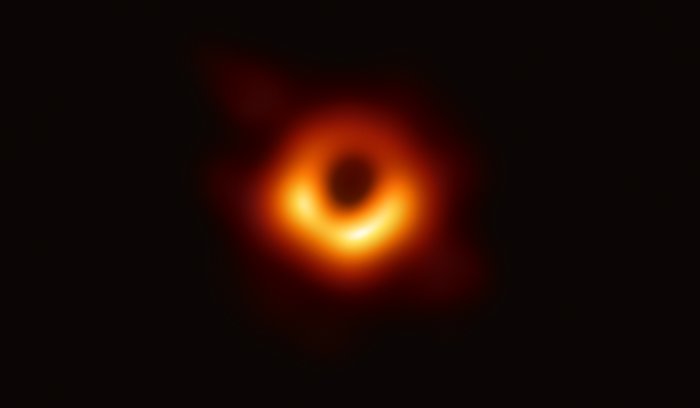In our previous blog, we found out how black holes are made.
We studied black holes made by single superstars.
These are called stellar black holes.
But there are much bigger versions.
They are supermassive black holes, monsters of the Universe.

Supermassive black hole, artist impression. NASA
But before we turn to them, we’ll see how we find black holes.
We’ll also find out what would happen if you fell into one!
Finding black holes
Discovering a black hole is difficult.
We’re looking for a dark, black object in dark, black space.
We can’t see the black hole directly.
Luckily, we can find a black hole if another star is close by.
The best example is the first one we discovered.
It’s called Cygnus X-1.
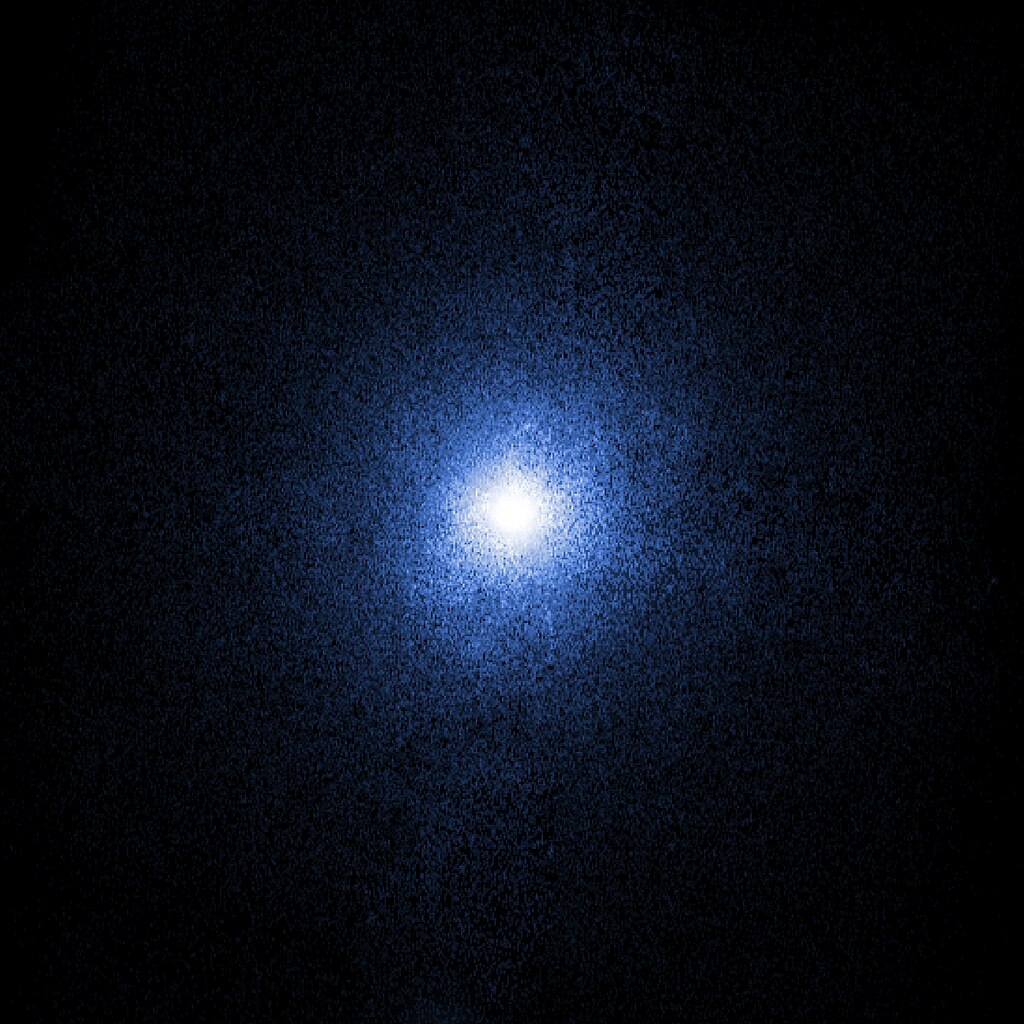
Chandra X-ray telescope image of Cygnus X-1. Credit: NASA / CXC
As material falls into a black hole, it screams out in X-rays.
A telescope designed to detect X-rays can find black holes.
X-rays can’t penetrate our atmosphere so the telescope must be launched into space.
Cygnus X-1 was discovered by a detector flown into space in 1964.
It was launched on a rocket from White Sands Missile base in New Mexico.

Old rockets at White Sands. Photo: Dennis Ashton
Further research showed that the X-ray source was part of a binary system.
Close by is a large blue star.
The black hole pulls in material from the star.
The result is powerful radiation in X-rays.

Cygnus X-1 artist impression. Credit: ESA / Hubble
Cygnus X-1 is about 20 times the mass of the Sun and lies 7,000 light years away.
What happens if you fall into a black hole?
This is another popular Wonderdome question.
So I’ll send you into a black hole.
You can wear a space suit.
I’ll stay at a safe distance. Off you go!
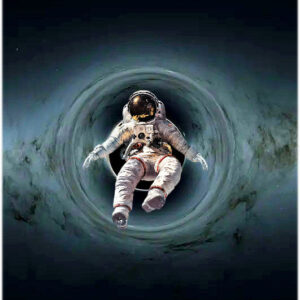
At first, all feels normal for you.
Then normality ends.
The black hole’s gravity begins to pull you apart.
Gravity pulls you long and thin, like a string of spaghetti.
Then you’re pulled apart, atom by atom.
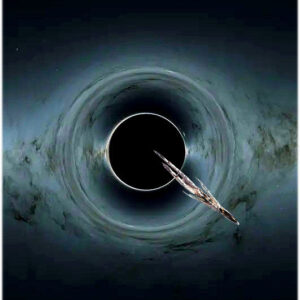
I’m watching you fall into the black hole.
Now something strange happens.
You seem to be moving slower and slower.
When you reach the edge of the black hole, you seem to stop.
What’s happening is that the pull of gravity is slowing down time.
The closer you get to the black hole, the greater the pull, the slower time goes.
I never see you fall into the black hole.
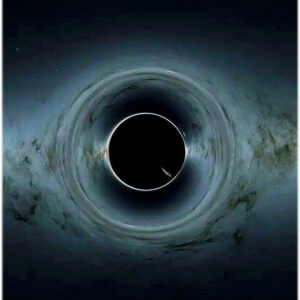
That’s how I see it. But for you, things are different.
For you, time goes by normally.
You fall into the black hole.
You pass through the event horizon. There’s no escape.
Then you are crushed to become part of the tiny singularity at the middle of the black hole.
You’ll stay there for eternity. Keep away from black holes!
However there is a wild theory that you might escape.
Maybe the black hole leads to a wormhole through time and space.
You fall into the black hole and through the wormhole.
Then you pop out through a white hole somewhere else in the Universe.
It sounds unlikely to me.
And anyway what comes out will not look much like you when you went in!
Now let’s move on to the monsters of the Universe – supermassive black holes.
Supermassive Black Holes
Location
We find supermassive black holes in the centre of galaxies.

Spiral Galaxy. NASA / HST
Formation
A supermassive black hole can weigh 100,000 times more than the Sun.
Some monsters weigh in at millions, even billions of Suns.
They are found in the middle of galaxies because that’s where the biggest, oldest stars are found.
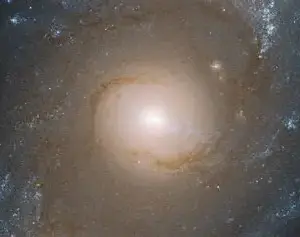
Active galaxy centre. NASA / Webb Telescope
Many stars die here and make black holes.
The black holes merge together to make a bigger black hole.
The bigger black hole begins to swallow up nearby stars.
It grows into a supermassive black hole.

Supermassive black hole, artist impression.
Credit: NASA, ESA, CSA, Joseph Olmsted (STScI).
First Photos
Astronomers have recently taken images of two supermassive black holes.
Both were made by the Event Horizon Telescope, EHT.
EHT is not a single instrument.
It is a collection of radio telescopes scattered all over the world.
There stretch from Hawaii to mainland USA on to Greenland and to Europe.
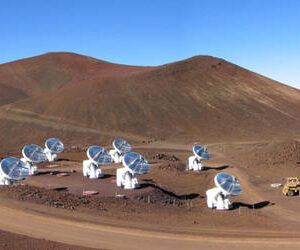
Sub-millimeter array, Mauna Kea, Hawaii.
In recently visite one outpost of the EHT, on Mauna Kea in Hawaii.
Galaxy M87
Galaxy M87 is as spiral galaxy in the constellation Virgo.
It is 54 million light years away.
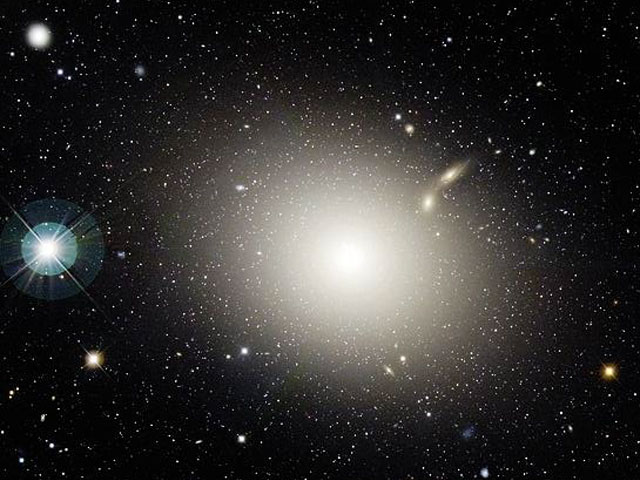
M87. NASA / HST
M87 is a gigantic elliptical galaxy, much bigger than our Milky Way.
It holds trillions of stars, compared to our galaxy’s mere billions.
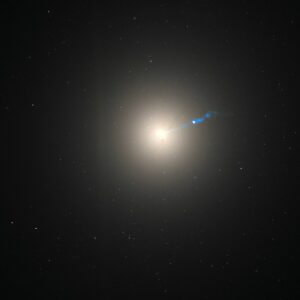
M87: NASA / HST
M87 is an active galaxy, a strong source of radio waves.
On the Hubble Space Telescope image, you might just see a blue jet of material coming from the centre.
This jet of material is being blasted out from around a supermassive black hole.
In 2019, the EHT released an image of the black hole at the heart of M87.
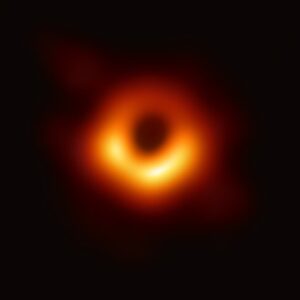
M87 black hole: Event Horizon Telescope
The black hole is a dark shadow in the middle of the image.
Material falling toward the black hole gives out a ring of light.
The ring is 100 billion kilometres across.
Black hole in the Milky Way
The second black hole image comes from our own galaxy.
In the centre of the Milky Way is a supermassive black hole
It weighs in at 4 million times the mass of the Sun.

Artist impression: ESO/MPE/Marc Schartmann
In this ESO simulation, the supermassive black hole is swallowing a cloud of gas..
The lines trace the orbits of stars around the black hole.
They will eventually fall in and make the black hole even more massive.

Supermassive black hole at the centre of the Milky Way. Credit: ESO / EHT
In 1922 the Event Horizon Telescope team released the first ever image of the Milky Way black hole.
Again it shows material glowing as it falls towards the black hole.
The name of the central object is Sagittatius A*.
It is a powerful radio source.
This giant black hole is 44 million kilometres across, about 27 million miles.
It weighs 4 million times more than our Sun.
There are monsters like this at the centre of nearly all galaxies.
The biggest black hole
The bigest black hole found so far is TON 618.
It’s at the centre of a quasar, an active galaxy.
TON 618 lies around 10.4 billion light years away

Quasar TON 618: Sloan Digital Sky Survey
TON 618 weighs in at a colossal 40 billion times the mass of our Sun.
Because of it’s distance, we see the quasar as it was over 10 billion years ago.
We see it as a young galaxy.
The name, TON 618 comes from the observatory which made the discovery.
It’s the Tonantzintla Observatory in Mexico.
More to come
In our last two blogs, we’ve discovered a lot about black holes.
We now know how they’re made and how to find them.
We’ve seen black holes made from single superstars.
We know there are supermassive black holes at the centre of galaxies.
But we don’t really know what’s going on inside the black hole.
What lies beyond the event horizon is still unknown.
There’s more to be discovered about black holes.
Black holes still hold on to their mystery!

The author: Dennis Ashton, MBE, is a Fellow of the Royal Astronomical Society and a Wonderdome presenter.
In 2024, Dennis received the Special Contribution award from the British Association of Planetaria.
In 2025 he became a Member of the Order of the British Empire for over 50 years work in Astronomy Education.
Wonderdome now has 15 presenters, making us the largest – and best – mobile planetarium organisation in the UK.
Would you like more Astronomy news?
Do you want to hear about our upcoming public events?
Follow Wonderdome Portable Planetarium on Twitter / X and Facebook.
Or you can go at our website wonderdome.co.uk.

